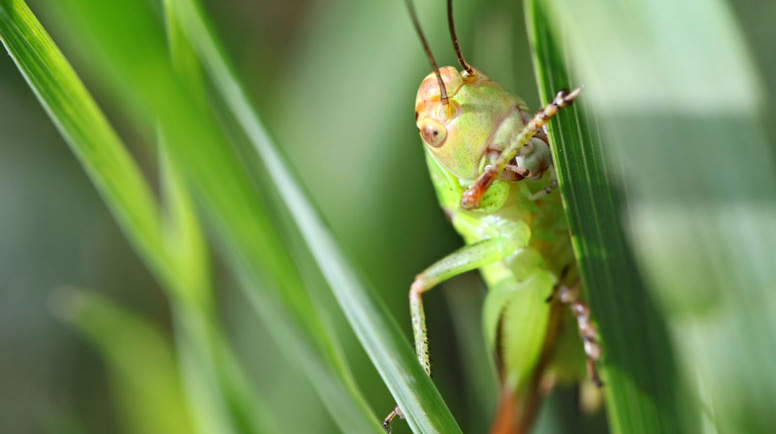What Are Lawn Insects And Diseases?
Insects and diseases can have a devastating effect on lawns. To address the problem, it is important to understand what insects and diseases are attacking your lawn and to use appropriate control measures. Insects are small creatures that feed on plant material or attack by boring into woody plants. Pests such as grubs, caterpillars, and chinch bugs feed on grass blades, stems, and roots. They can quickly damage a lawn if left unchecked. Diseases are caused by fungi, bacteria, or viruses that attack the plant material in the soil or on the leaf surface. Some common symptoms of diseases include wilting leaves, discoloration of foliage or spots on grass blades. Fungi often cause molds and mushrooms to form.
Weeds are another major issue for lawns and can compete with existing grass for resources like sunlight, water and nutrients. Common broadleaf weeds that affect turfgrass include dandelions, clover, thistle and crabgrass.
What Causes Lawn Diseases And Insects?
A healthy lawn can become overrun with pests and diseases if it is not maintained properly. These issues are often caused by environmental factors such as humidity, temperature, air circulation, sunlight, water levels, soil composition and other conditions. Poor maintenance practices such as over or under watering, mowing too short or leaving debris on the lawn can also lead to lawn problems.
Some of the most common lawn diseases and pests are fungi, insects and weeds. Fungal problems often appear as spots or patches on your lawn that may be yellow, gray, black or brown in color. Insects can attack grass directly by eating it or living inside of it. Lawn weeds can also compete with existing grass for resources like sunlight, water and nutrients.
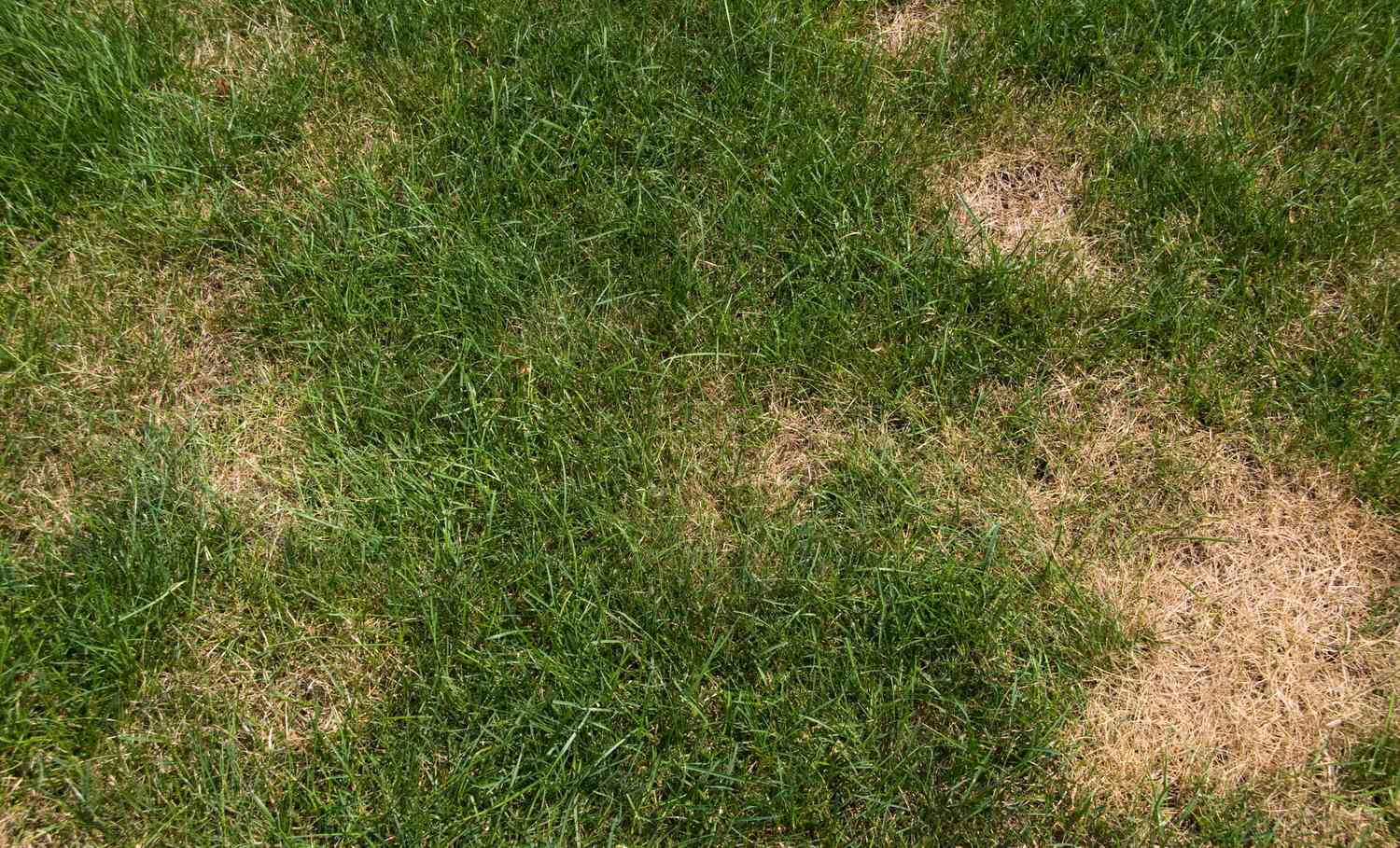
What Do Lawn Diseases and Insects Look Like?
When it comes to maintaining a healthy lawn, many people don’t realize the potential dangers lurking beneath the surface. Unchecked lawn diseases and insects can cause major damage to your grass and plants in no time. Here is an overview of common lawn vulnerabilities and what they look like:
Lawn Diseases
Lawn diseases are caused by fungi that invade the soil and grass blades. Common signs of lawn diseases include:
- Discoloration or yellow patches
- Dead spots on the lawn
- Fuzzy, white growths in patches
- Wilting or weak grass blades
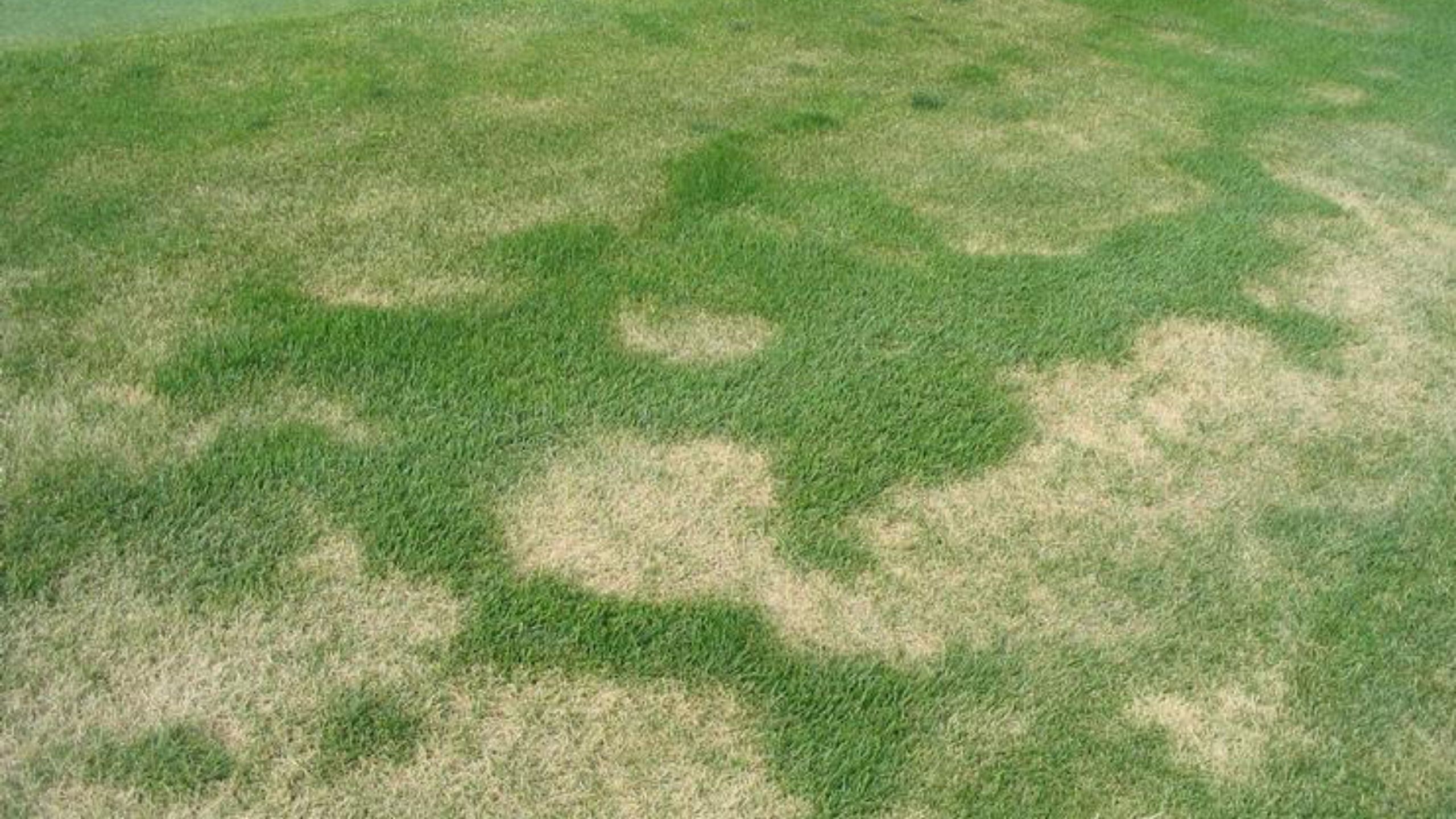
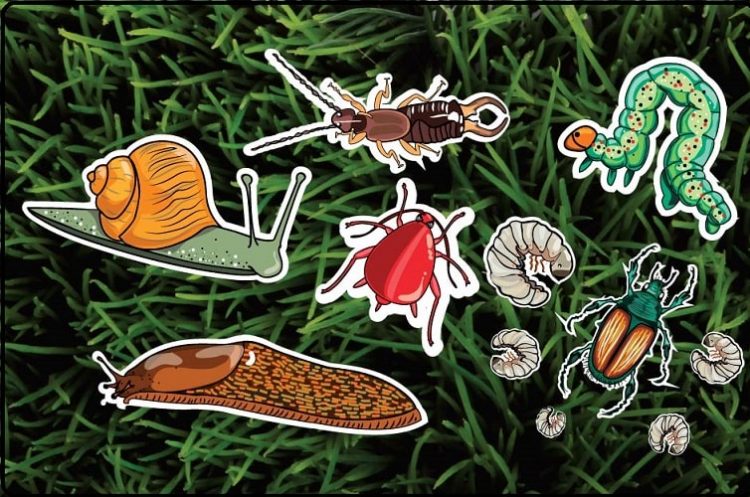
Lawn Insects
Lawn insects are small creatures that feed on plants, roots, and leaves. Common signs of lawn insects include:
- Brown patches in the grass
- Discoloration or yellow areas in the turf
- Damage to tree bark, leaves, and stems
- Uneven soil near trees and plants
How To Detect Common Lawn Insects And Diseases
When it comes to caring for your lawn and keeping it healthy, one of the biggest challenges is detecting common lawn insects and diseases. With a little knowledge about how to spot these problems early on, you can take steps to prevent further damage and keep the grass lush and green.
The first step in identifying any potential issues with your lawn is to inspect it regularly. Make note of any areas that look discolored or patchy, as well as any small holes or tunnels in the grass. These can be signs of insect activity or disease. Another thing to watch out for is the presence of larvae, especially near the base of the blades of grass. In addition to visual inspection, you should also pay attention to other clues that may indicate lawn problems. For instance, if you notice a sudden increase in the amount of weeds or large patches of brown grass, this could be an indication of insect infestations or disease. If you also find mounds of soil around your lawn, these are likely to be ant hills—another sign of insects at work.
Finally, it’s important to remember that lawn diseases and insect infestations can be caused by environmental factors, such as temperature or humidity levels. If the weather changes suddenly, you should check your lawn for signs of disease or insects. With regular inspections and a good understanding of how to spot common symptoms of disease and infestation, you’ll be able to take steps quickly to keep your lawn healthy and green. Additionally, it’s also a good idea to seek professional advice if you notice any of the above-mentioned signs or have any concerns about your lawn’s health. With proper care, you can enjoy a beautiful outdoor space for years to come!
Steps To Take In Guarding Against Common Lawn Insects And Diseases
Having a lush, healthy lawn can be the pride of any home. Unfortunately, insect infestations and diseases can quickly turn a vibrant yard into an eyesore. Here are some steps you need to take to guide against lawn diseases and insects.
Know What To Look For
Common lawn insects to look for include grubs, chinch bugs, sod webworms and mites. Common lawn diseases to keep an eye out for are rusts, fusarium, brown patches and powdery mildew as well as unusual appearances on your lawn.

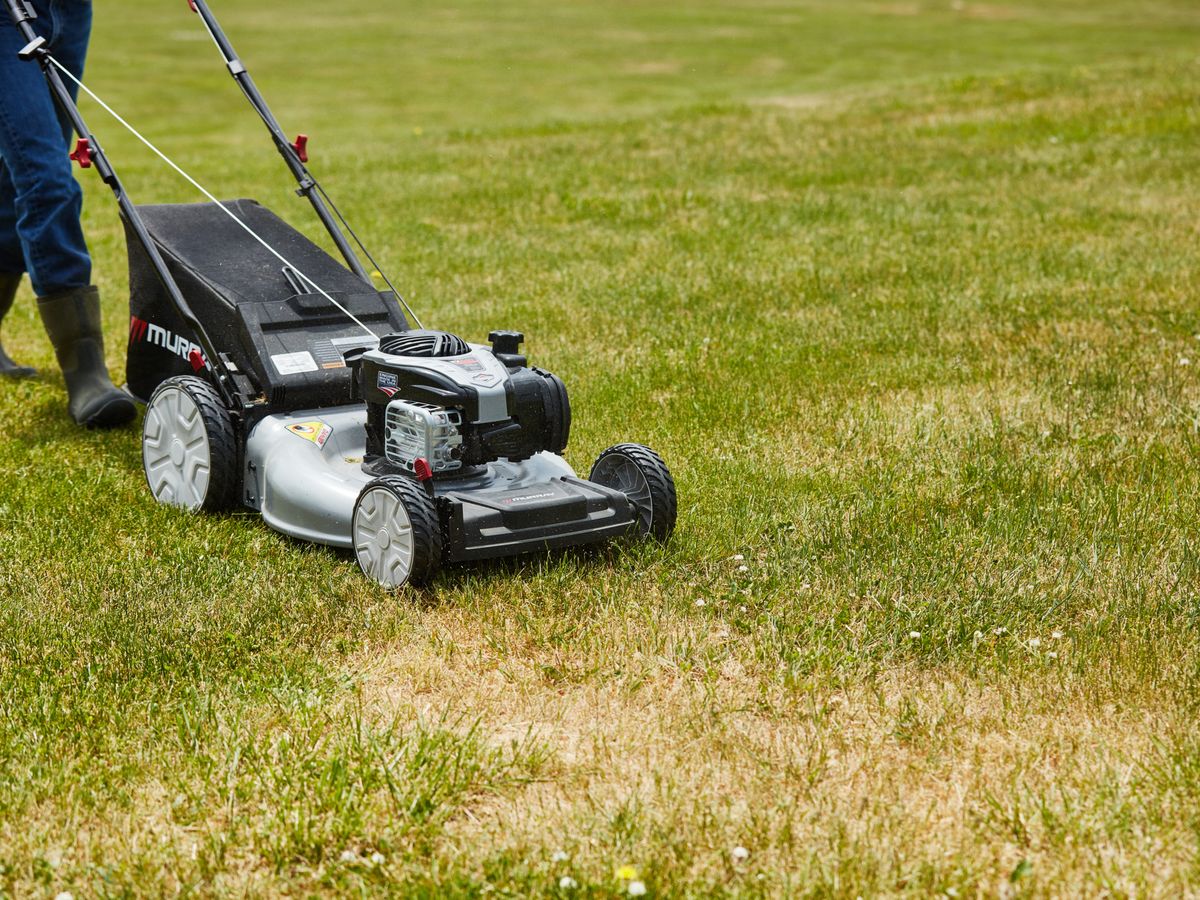
Check For Damage
Inspect your lawn closely for any signs of damage. Insects can cause turf discolouration or wilting, and they can also eat away at grass blades. Diseases usually create circular patches of discoloured or dead grass.
Examine For Insects & Larvae
Mow the lawn short then part the turf with your fingers to check for insects or larvae. You may be able to spot them crawling around in the soil, and you can also look for signs of their presence such as small mounds of soil around the roots.
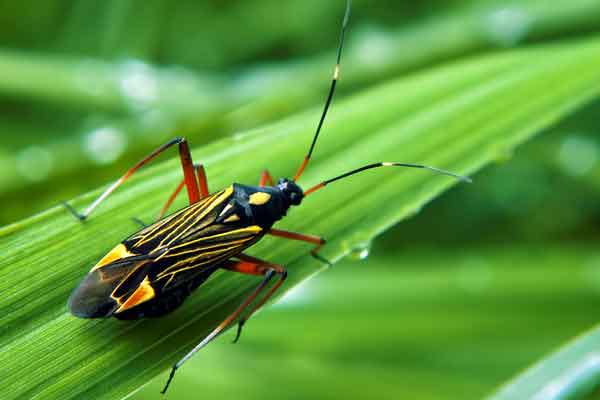
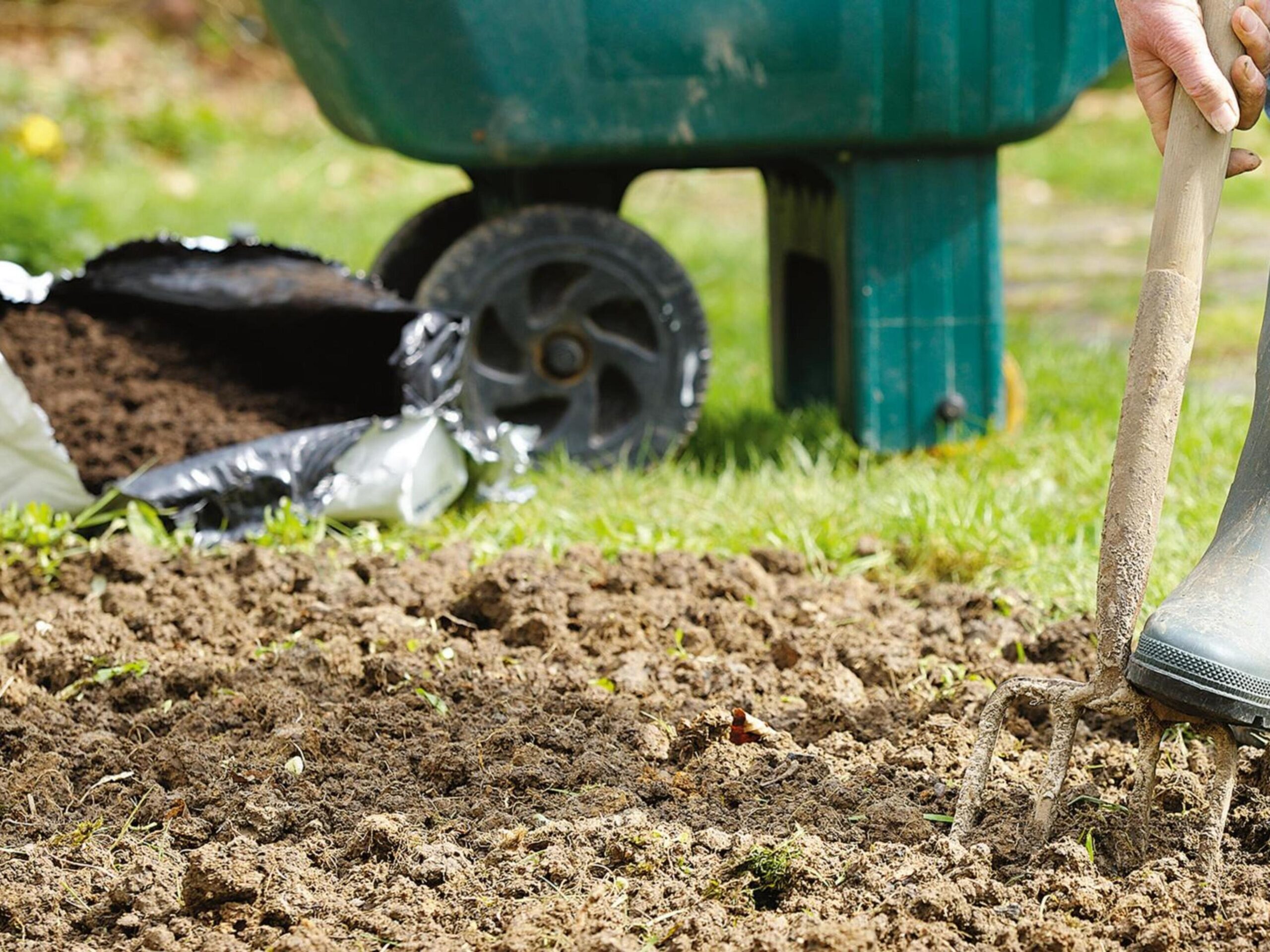
Test Your Soil For pH Levels
Soil that is too acidic or too alkaline can make your lawn more prone to disease. Testing kits are available at most hardware stores, and you should test both the topsoil and the underlying soil. Doing so will help you determine if your soil pH is in the optimal range for growing grass.
Get Professional Help
If you are still unsure about the cause of the problem, or if it seems to be more serious than you can handle, seek professional help from a lawn care specialist. They will be able to accurately diagnose your lawn and recommend a course of action that will get your lawn back on track.
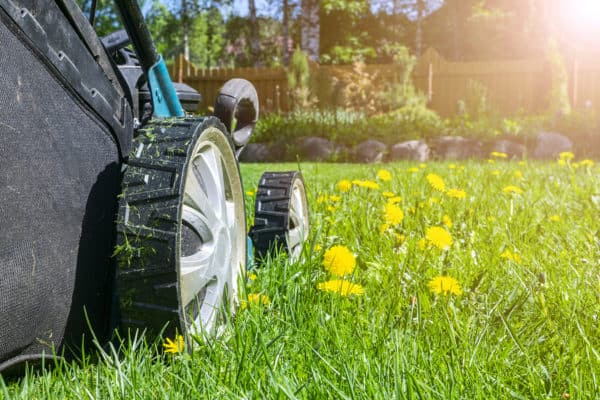
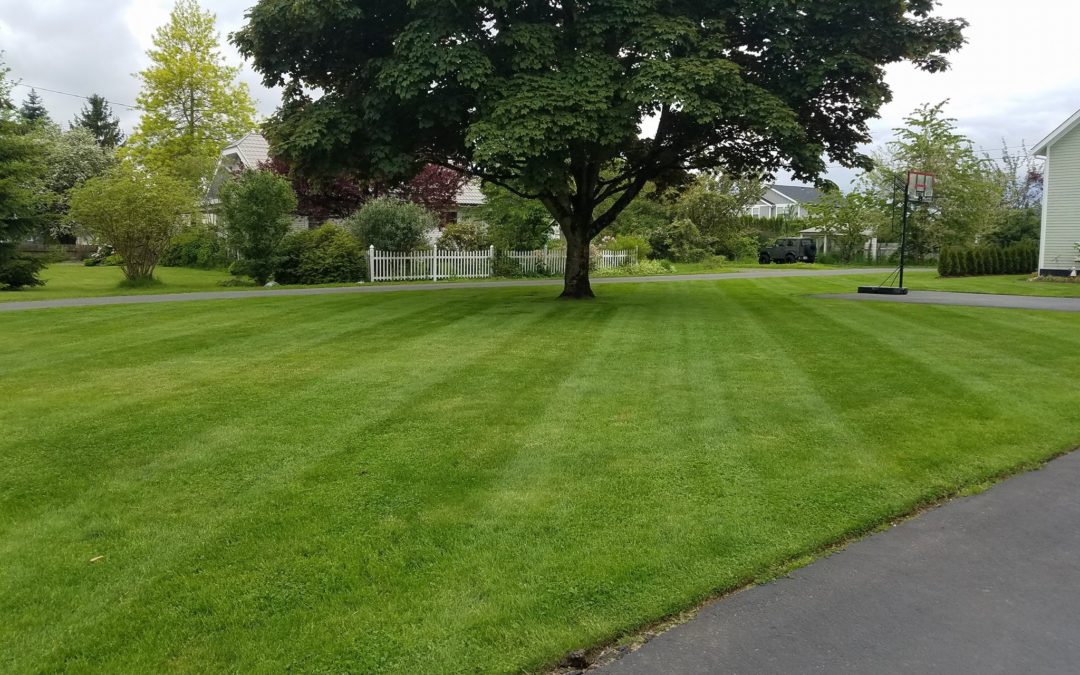
Take Precautionary Measures
Whichever steps you take to get your lawn healthy again, be sure to practice proper lawn maintenance as a precautionary measure. Regularly mowing, fertilizing and weeding can help create an environment that is inhospitable to insects and disease. Additionally, using the right kind of grass seed for your geographic region and climate can help ensure that your lawn is better able to withstand pests and disease.
With a little knowledge and effort, you can be well on your way to having a healthy, beautiful lawn all year round. Taking proactive steps now will help save you time and money in the future by avoiding costly treatments that may have been unnecessary.
Plant Variety To Increase Resilience
A great way to increase your lawn’s resilience is to plant a variety of grass species. Different grass cultivars have different characteristics, so planting several different types can give you more protection against disease and insect infestations because not all of the plants will be equally affected by any given problem. Plus, by planting a mixture of grasses, you can create a lawn that looks lush and full even in drought conditions or other stressful times.
By taking the time to properly diagnose what is affecting your lawn and implementing preventive measures, you can help keep it looking its best for years to come.

Mistakes That Leads To Lawn Insects And Diseases
Lawn pests and diseases can cause significant damage to lawns if they are not addressed promptly. Unfortunately, many homeowners make mistakes that make their lawns more vulnerable to infestation or infection. It is important to be aware of these common mistakes so you can avoid them and keep your lawn looking its best.

Over Watering
One mistake involves watering too much. Overwatering can lead to excessive moisture which can make lawns more susceptible to various diseases and insects. Instead, it is better to water your lawn deeply but infrequently so the roots are able to absorb the water they need without becoming overly saturated.
Fertilizing Too Much
Fertilizing too often or using an incorrect fertilizer can also be problematic for lawns. Too much fertilizer can burn the grass and lead to soil that is unable to absorb water, creating an ideal environment for pests and diseases. It is important to use the appropriate type of fertilizer in the correct amount for your lawn in order to provide it with the nutrients it needs without causing damage.
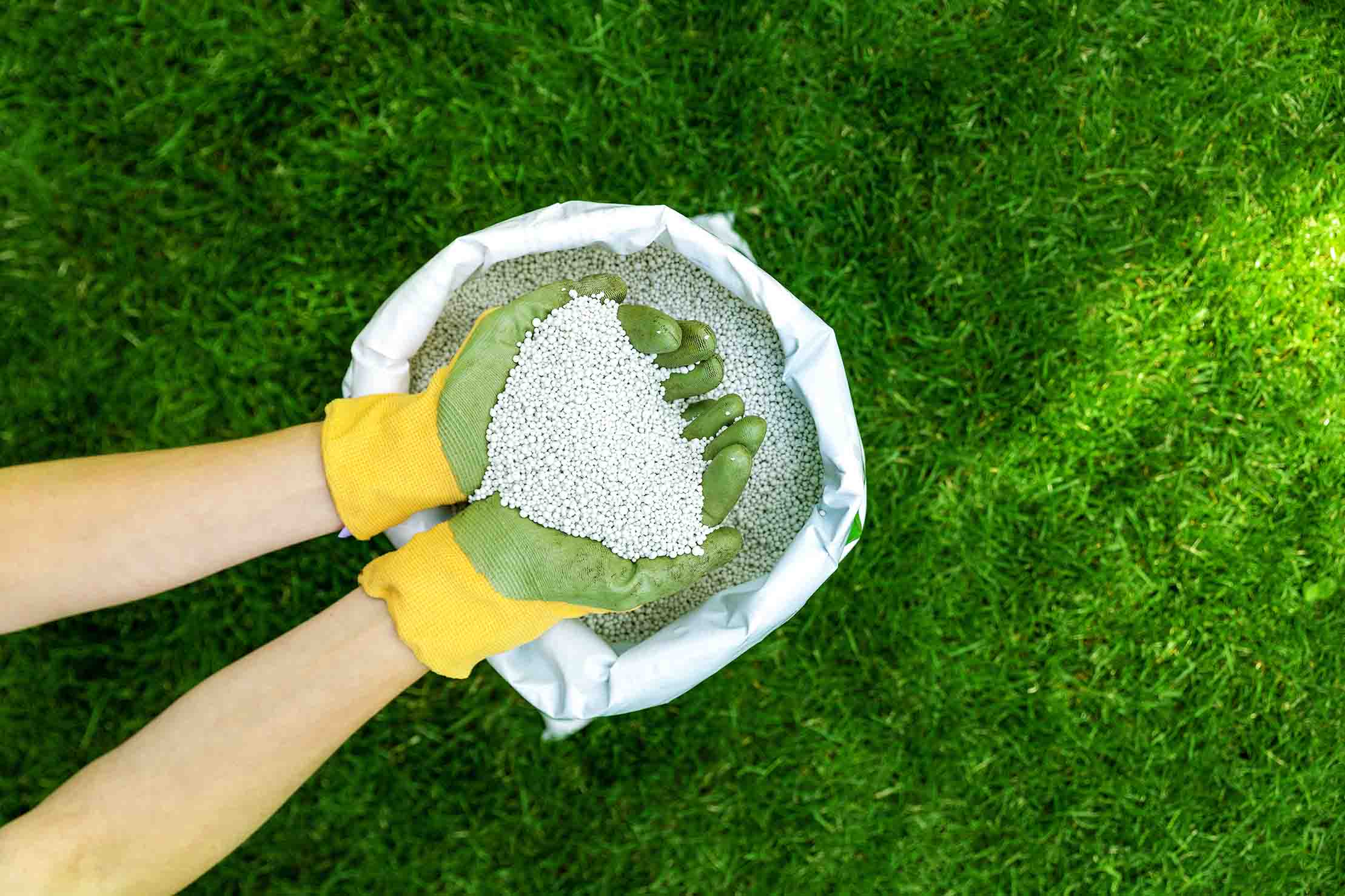
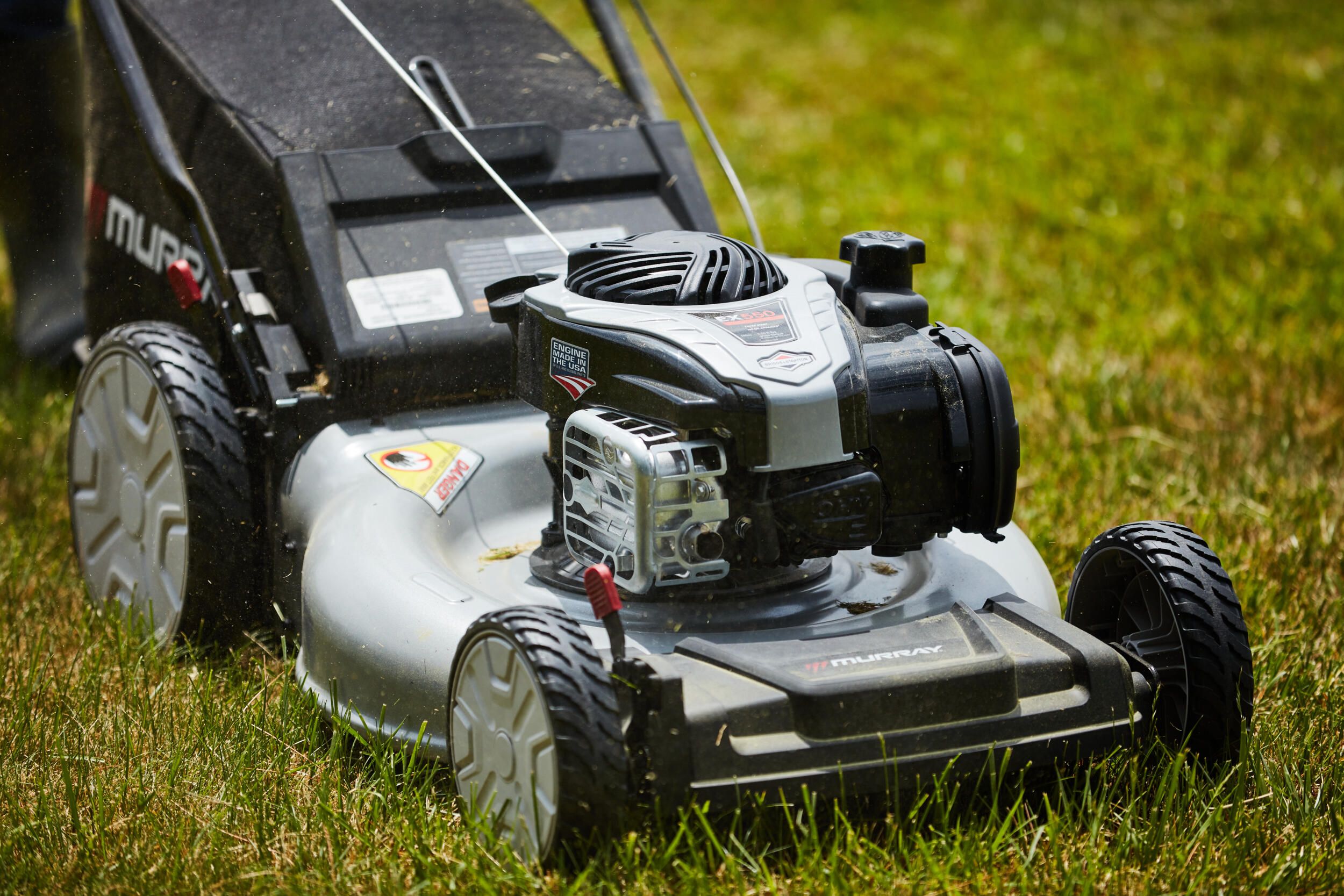
Mowing Too Short
Another mistake that can contribute to lawn pests and diseases is mowing too short. Many people think that mowing the grass shorter will make the lawn look nicer, but in reality it can expose the lawn to a number of pests and diseases. It is important to keep your grass at least two inches tall so it can protect itself from environmental stressors.
No Aeration
Finally, failing to aerate or dethatch can also lead to an increased risk for pests and diseases. Aerating involves making small holes in the soil to allow air and water to penetrate more deeply, while dethatching removes excess thatch build-up which can interfere with the health of the lawn.
By being aware of these mistakes, you can take steps to ensure your lawn remains healthy and free from disease or insect infestations. Taking the time to properly water, fertilize, mow, and aerate or dethatch your lawn can make a big difference in its overall health. With proactive maintenance measures like these, you can keep your lawn healthy and looking beautiful for years to come. Give your lawn the care it needs so it can remain lush and green all season long!
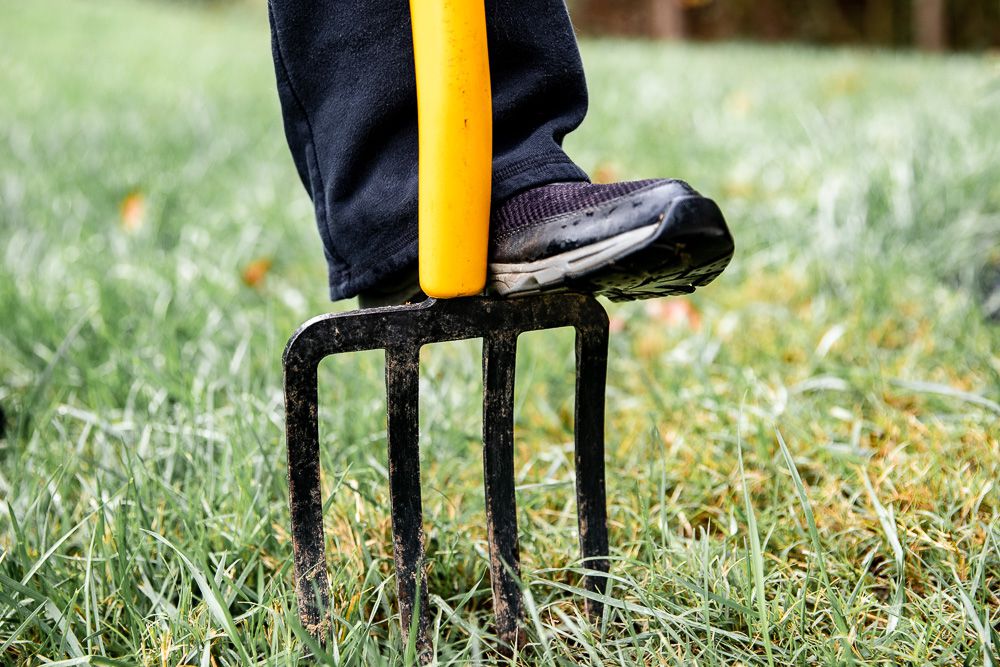
How Do You Control Lawn Diseases And Insects?
The key to controlling lawn insects and diseases is prevention. Here are some tips you can follow to reduce the chances of disease occurring:
- Test your soil regularly to ensure its pH is within an acceptable range for your type of grass. This will help prevent nutrient deficiencies and other problems from occurring in the lawn.
- Follow a regular schedule when it comes to watering and fertilizing your lawn. Too much of either can lead to unhealthy grass, which will make it more susceptible to disease.
- Aerate the lawn regularly to help encourage good soil drainage. Poor drainage increases the risk of fungal infections.
- Mow regularly and maintain a proper height for your grass type. Longer grass blades are more vulnerable to disease and pests.
- Remove weeds from your lawn, as they can harbor diseases. If you notice any discoloration or other signs of disease in the weeds, be sure to remove them immediately.
- Apply a fungicide to your lawn if it’s infected with fungus. It’s important to follow label directions carefully when using fungicides, as overuse or misuse can harm your lawn.
- Practice good sanitation when mowing or working in the garden. Make sure to clean up any debris and dispose of it properly, as this can help prevent diseases from spreading.
- Limit the amount of foot traffic on the lawn, as this can compact the soil and create an environment that’s more conducive to disease.
- Invest in lawn treatments such as mulching or topsoil to improve the soil’s health and create a better environment for your grass. Good soil will help prevent disease from taking hold in your lawn.
By following these simple tips, you can help reduce the chances of lawn diseases occurring and keep your grass looking its best.
Types Of Lawn Insects
Lawn insects can cause serious damage to grass and other plants in your yard. With a variety of destructive pests out there, understanding the common types of lawn insects is key to preventing infestations and keeping your lawn healthy.
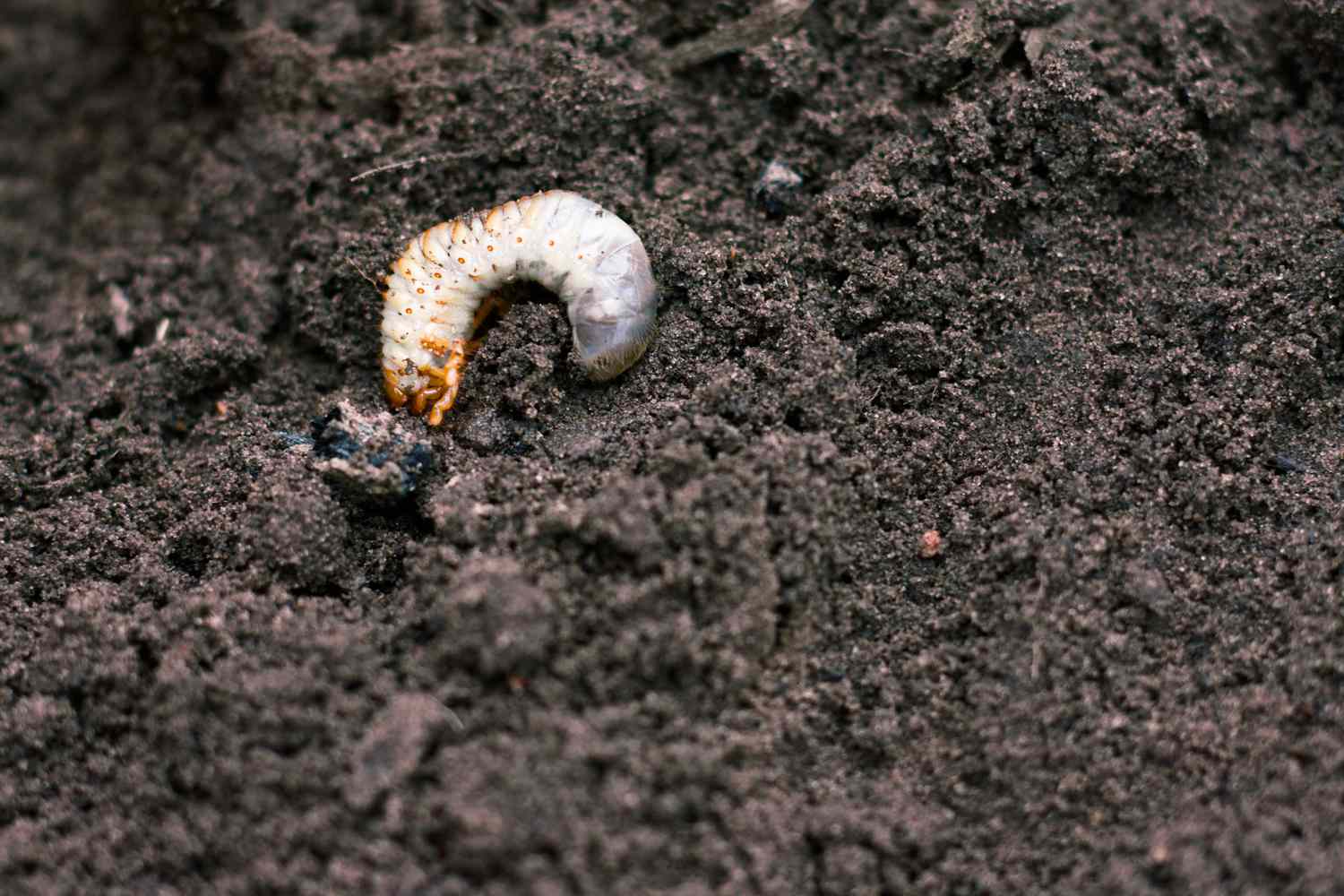
Grubs
Grubs are the larvae of beetles like Japanese beetles, June bugs and chafers. Generally found near the surface, these white, c-shaped larvae feed on grass roots, causing brown patches that eventually cause the affected area to die. To combat grubs, you can apply grub control products early in the season and use nematodes for a natural solution.
Sod Webworms
Sod webworms are small caterpillars with stripes of yellow or green and brown. They feed on grass blades, leaving the lawn looking raggedy with small patches of dead grass. To help control them use insecticides approved for use against sod webworms and encourage beneficial insects like ground beetles in your garden to help keep the population in check.
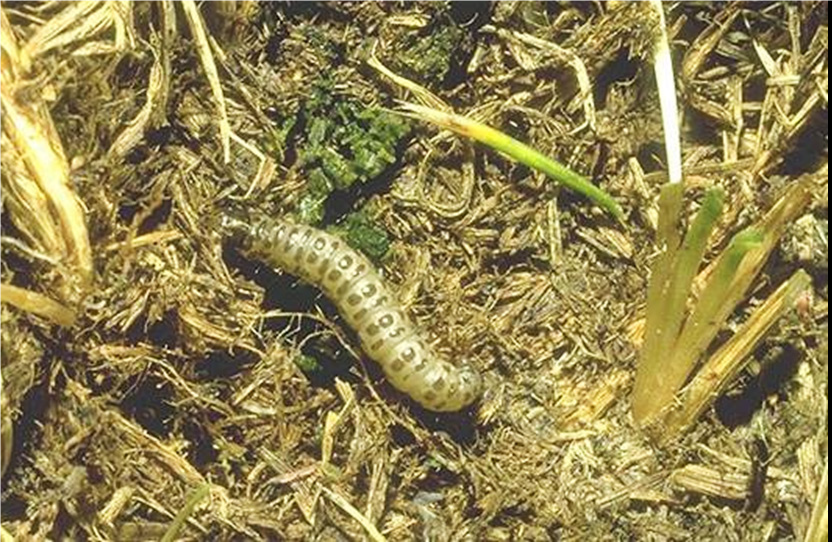
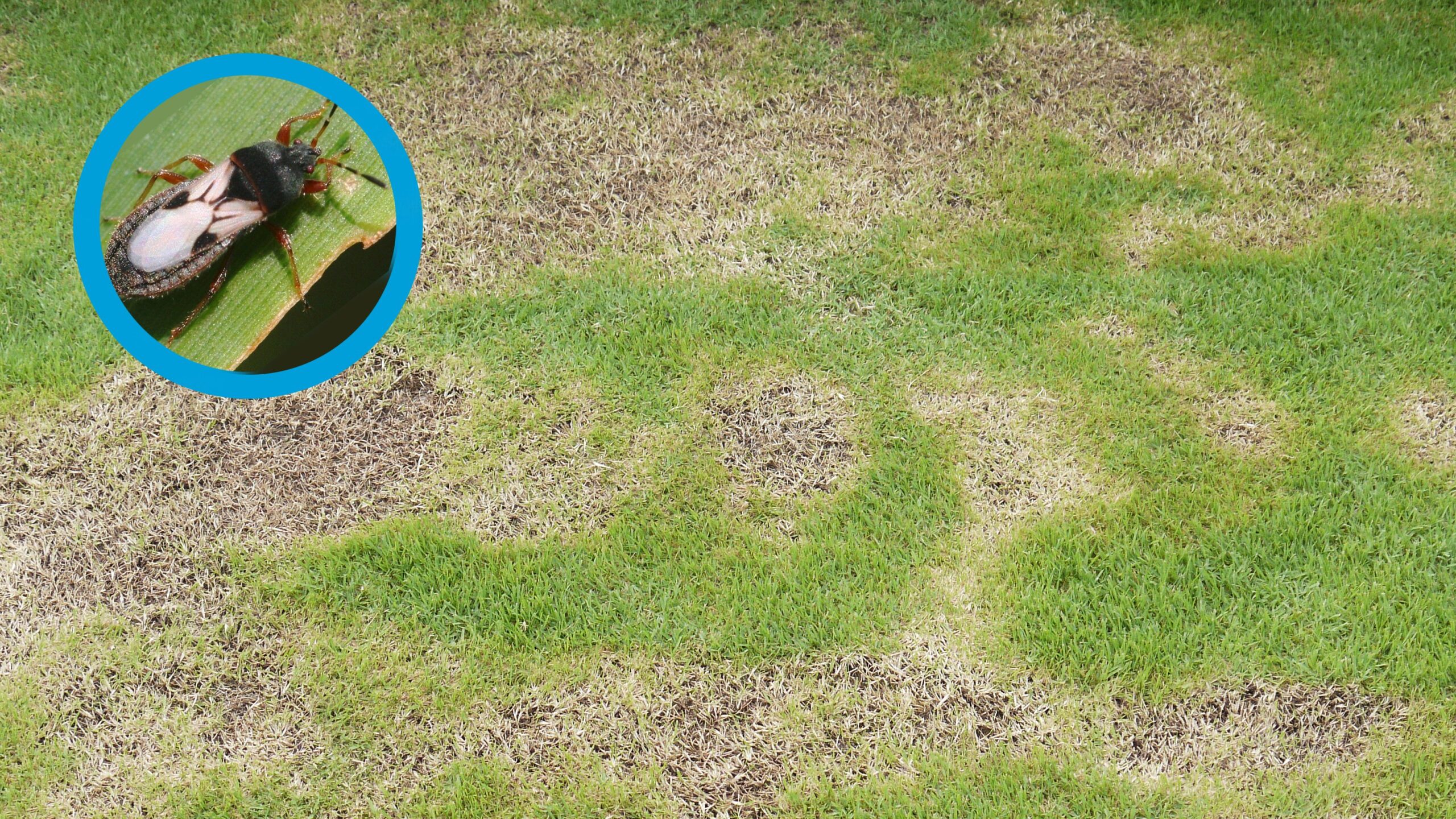
Chinch Bugs
Chinch bugs are tiny black bugs that suck sap from the grass blades, leaving behind yellow patches that eventually turn brown and die. To control these pests, use an insecticide or a natural solution like diatomaceous earth and keep your lawn well-watered to make it less attractive to them.
Armyworms
Armyworms are caterpillars that feed on grass blades, leaving behind dead patches of grass. They can be difficult to control, but keeping your lawn mowed regularly and applying insecticides should help. You can also attract beneficial insects like ladybugs and lacewings to your garden to help keep the population in check.
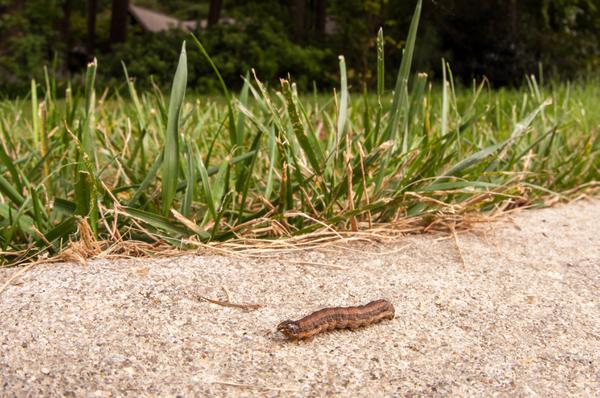
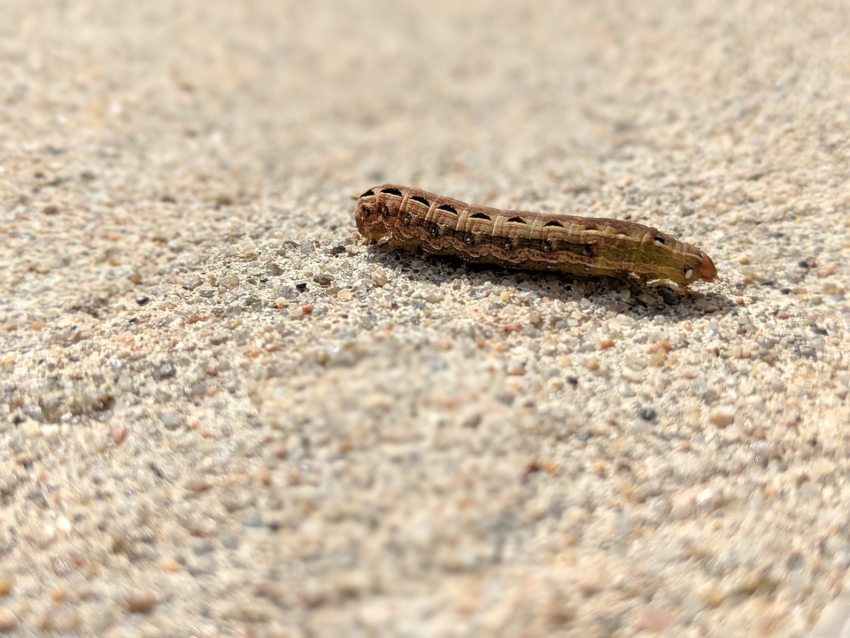
Cutworms
Cutworms are caterpillars that feed on young seedlings and grass blades at night, leaving behind small, dead patches of grass. To control them, keep your lawn mowed regularly and apply insecticides or use a natural solution like diatomaceous earth.
By understanding the types of lawn insects that may be causing damage to your yard, you can take steps to prevent infestations and help ensure a healthy lawn.
Types Of Lawn Diseases
Lawn diseases can be caused by a variety of factors, including insects, fungi, bacteria, and environmental conditions. Knowing how to identify them is key to saving your lawn. Here are some of the most common types of lawn disease:
Brown Patch
This type of fungal disease creates circular patches in the grass that turn brown or reddish-brown. It is caused by overwatering, high humidity, poor air circulation, and excessive nitrogen from fertilizers.
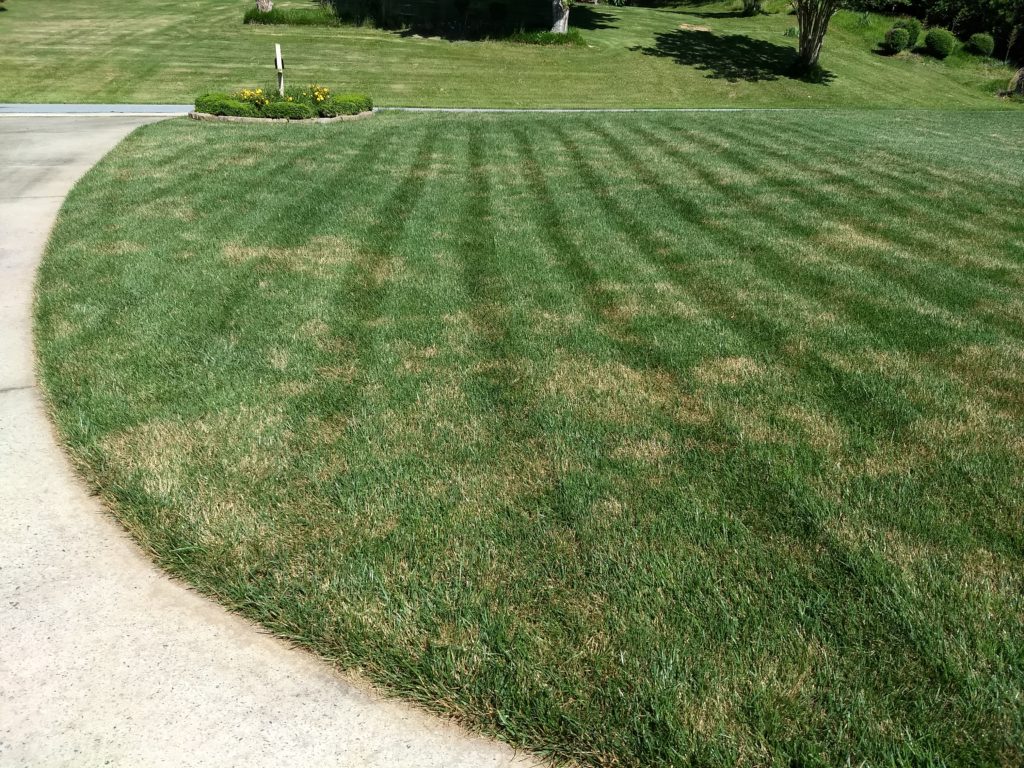
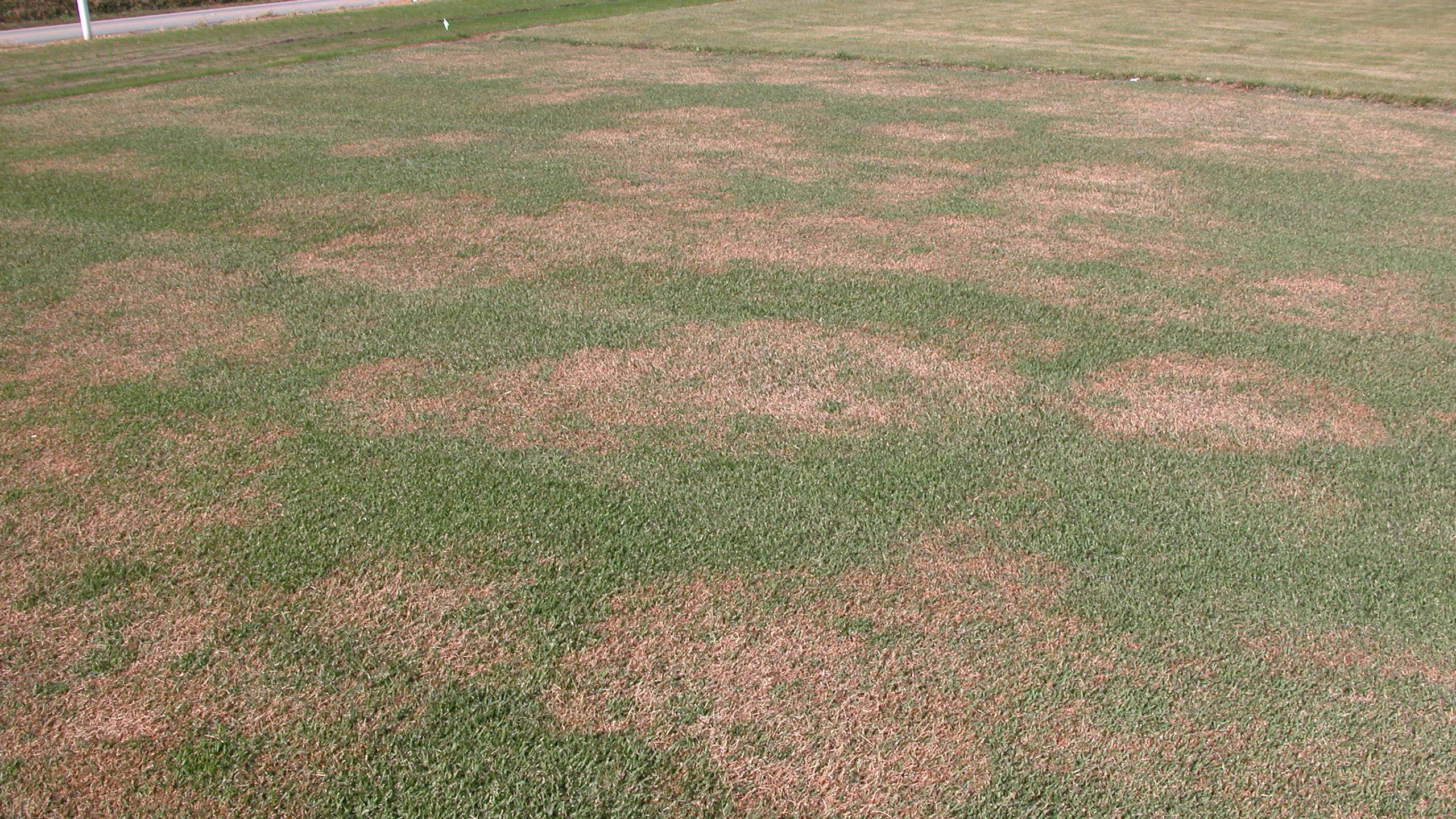
Large Patch
Large patch is a fungal disease that causes the grass to wilt and turn yellow or brown in large patches. It usually appears during cool weather and can be prevented by improving drainage in the soil and reducing fertilizer use.
Dollar Spot
Dollar spot is a fungal disease that causes small, round spots to appear on the grass. It is caused by excessive watering and wet weather conditions. Mulching and aerating can help prevent dollar spot from occurring.
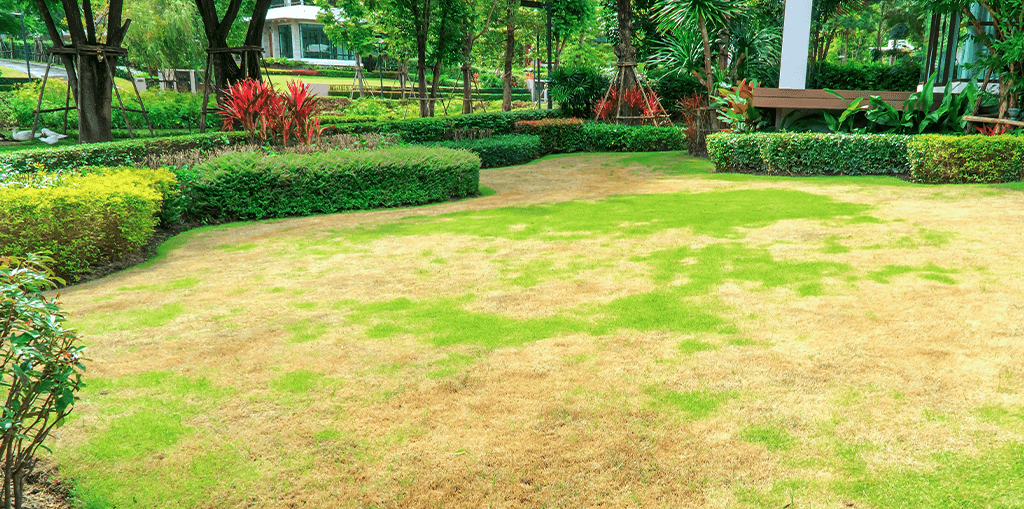
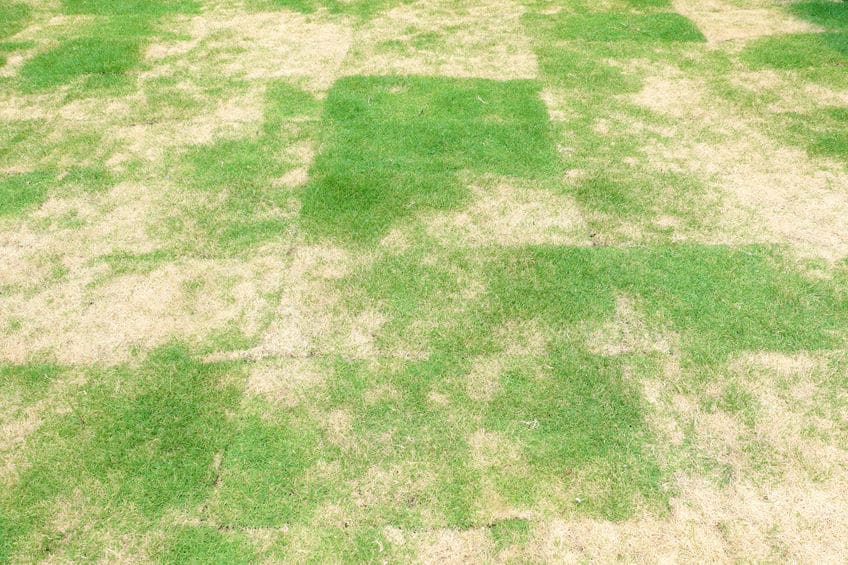
Pythium Blight
Pythium blight is a fungus that causes the grass blades to turn yellow or brown and die. It thrives in wet and humid conditions, so it is important to keep the lawn dry in order to prevent this disease from occurring.
Gray Leaf Spot
Gray leaf spot is a fungal disease that causes yellow or brown spots on the grass blades. It can be prevented by proper mowing height, fertilizing correctly, and avoiding over-watering or under-watering the lawn.
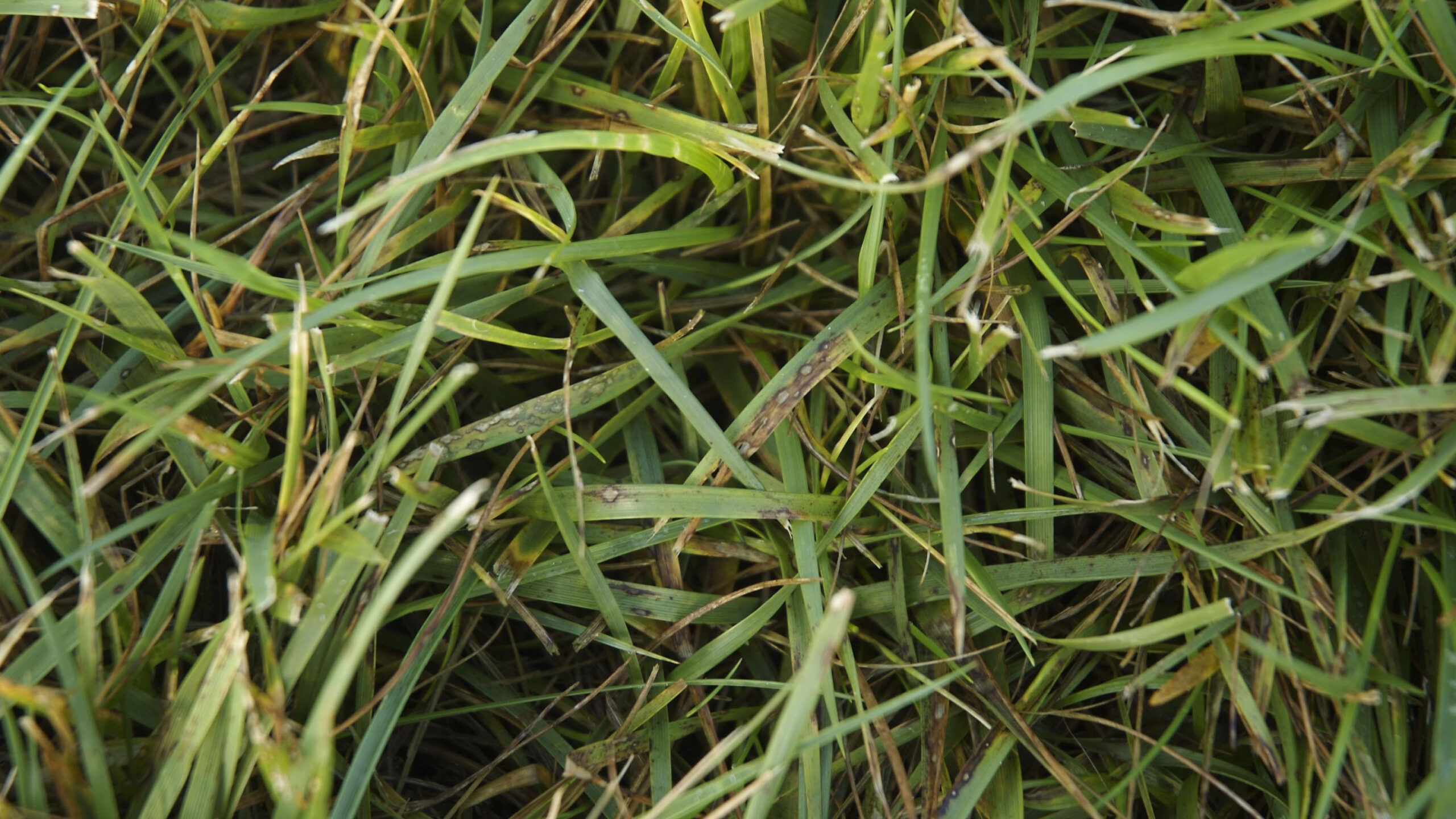
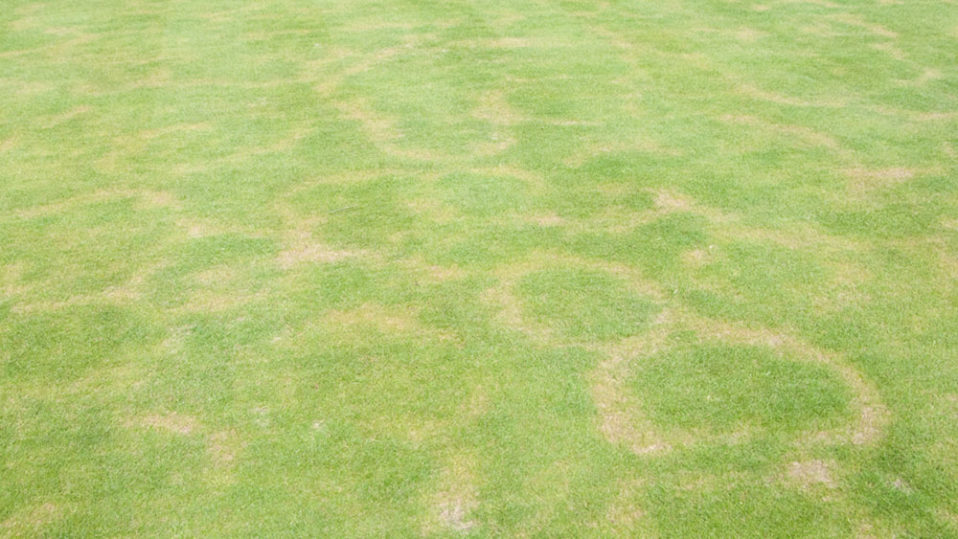
Fairy Ring
Fairy ring is a fungus that creates circles of dark green or yellow grass. It can be prevented by improving drainage in the soil and avoiding over-fertilizing or overwatering the lawn.
These are just a few of the most common types of lawn diseases, so it is important to stay vigilant and monitor your lawn for any signs of disease. If you spot something unusual, contact a professional to help identify and treat the issue. With proper care and maintenance, you can keep your lawn looking its best!
Other Lawn Problems
In addition to insects and diseases, other problems can occur that cause damage and discolouration in your lawn. These include;
Poor Drainage
Water drainage is also important for keeping your lawn healthy. Poorly draining soils result in waterlogged areas where the grass can become soggy and prone to disease. Installing a drainage system can help to reduce this problem.
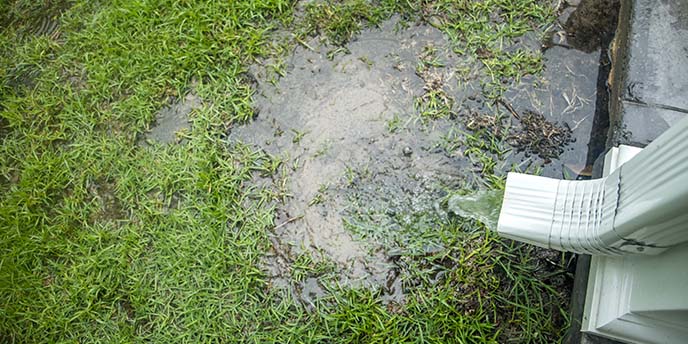
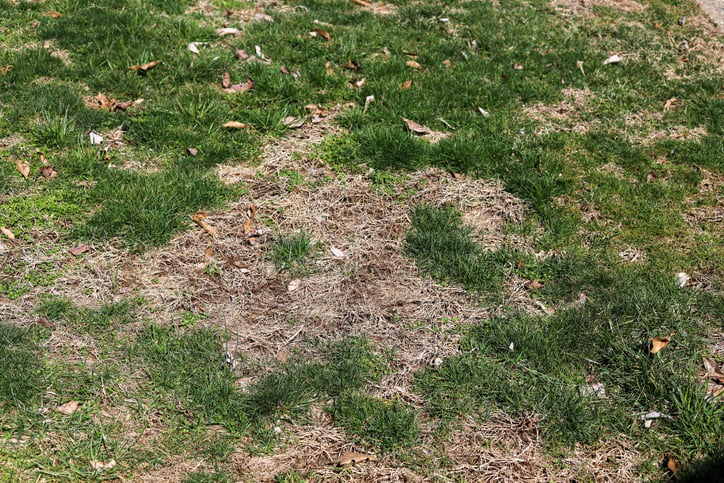
Compaction
Compaction is another issue that affects lawns. Foot traffic, heavy equipment and soil compaction caused by watering or rain can make the soil hard and compacted, resulting in poor drainage and air flow which can damage your grass. Aeration is one way of reducing compaction and improving soil structure.
Weeds
Weeds are plants that weren’t intentionally planted and can take over a lawn quickly if not dealt with. Pre-emergent weed killers are typically used to prevent weeds from growing in a lawn, but spot treatments may also be necessary to remove specific problem areas. It is important to identify the type of weed to determine which products will work best.
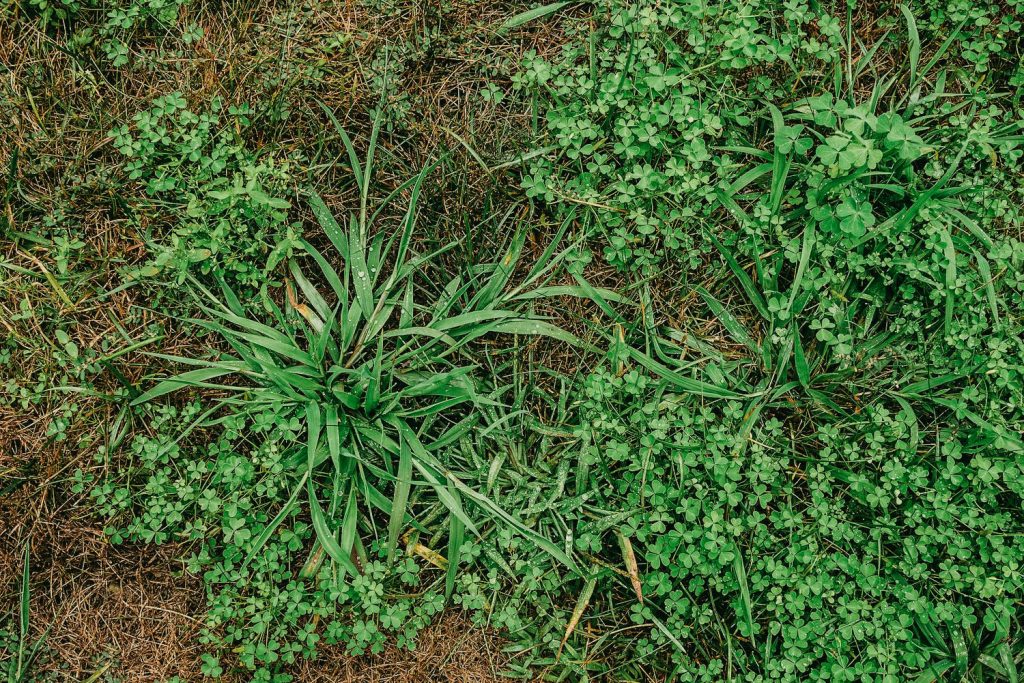
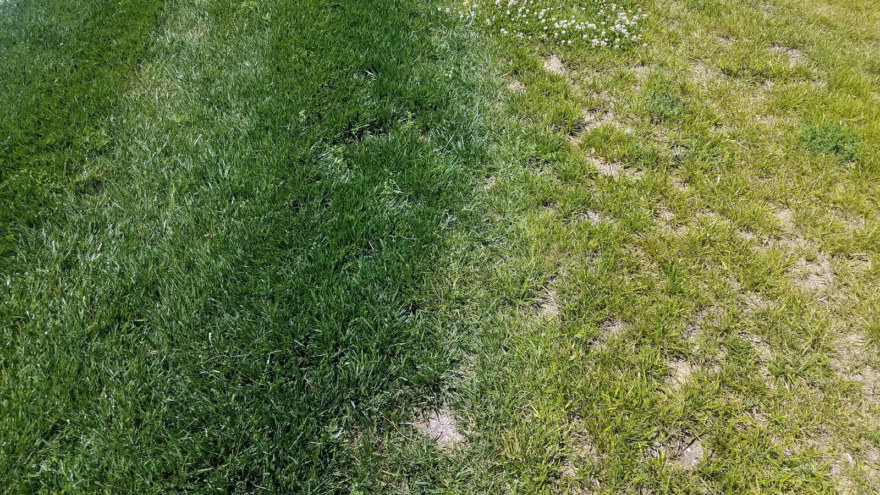
Nutrient Deficiencies
Nutrient deficiencies occur when the soil doesn’t contain enough of certain essential nutrients, such as nitrogen or phosphorus. This can cause grass to turn yellow and become weak, making it more susceptible to diseases and insects. To avoid nutrient deficiencies in your lawn, have a soil sample tested at least once a year to determine what nutrients need to be added. Additionally, regular fertilizing can help keep your lawn healthy and green.
Overall, keeping an eye out for any common problems in your lawn is important for achieving a lush and healthy outdoor space. By addressing issues quickly and taking the necessary steps to prevent them from occurring again, you will be able to enjoy your lawn for many years to come.
Need Professional Help?
Contact Turf Medic Services for professional help in preventing lawn pests and diseases.
More Information on our Home Page
Frequently Asked Questions
If you have a lawn that is being attacked by insects or diseases, it’s important to identify and address the problem quickly. Here are some frequently asked questions about lawn insect and disease issues.
What Are Common Types of Lawn Insects?
Common types of lawn insects include white grubs, cutworms, billbugs, sod webworms, and chinch bugs. These insects can cause extensive damage to lawns if left untreated.
How Can I Tell If My Lawn Has Insect Infestation?
There are several signs that indicate insect infestation in a lawn. These include brown patches or spots on the grass, irregularly shaped holes in the grass, an abundance of ants or other insects in the lawn, and matted or sunken patches of grass.
What Are Common Types Of Lawn Diseases?
Common types of lawn diseases include brown patch, red thread, rust, and dollar spot. These diseases can cause serious damage to a lawn if left untreated.
How Can I Tell If My Lawn Has Disease Infestation?
There are several signs that indicate disease infestation in a lawn. These include circular or irregular shaped patches of discolored grass, white or gray fungal growth on the grass, and matted or sunken patches of grass.
How Can I Prevent Insects And Diseases From Attacking My Lawn?
The best way to prevent insects and diseases from attacking your lawn is to practice proper lawn care. This includes mowing regularly, watering deeply but infrequently, fertilizing appropriately for the season, and aerating and dethatching as needed. Additionally, it is important to use insecticides or fungicides when necessary.
What Is The Best Way To Treat Insects And Diseases In My Lawn?
The best way to treat insects and diseases in the lawn is to properly identify them first. Once identified, a suitable pesticide or fungicide can be applied to get rid of the problem. It is important to read and follow the instructions on any product used for treatment. Additionally, it may be necessary to reseed or patch patches of dead grass. However, it is best to consult with a professional lawn care expert for the most effective treatment plan.
Do I Need To Test My Soil To See If It Is Suitable For Lawn Care?
Yes, testing your soil is an important part of lawn care. A soil test can determine whether or not your soil has the right composition for grass growth. Additionally, a soil test can also help to identify potential nutrient deficiencies and determine the best fertilizer or amendment for your lawn.
What Is The Best Time Of Year To Fertilize My Lawn?
The best time of year to fertilize your lawn depends on the type of grass you have. Generally speaking, cool-season grasses should be fertilized in the fall and early spring, while warm-season grasses should be fertilized in late spring and summer. It is important to read and follow all directions on the fertilizer product you are using.
What Is The Best Way To Water My Lawn?
The best way to water your lawn is deeply but infrequently. This means that you should let the soil dry out completely between watering. Additionally, it is important to water in the morning or early evening when temperatures are cooler and there is less evaporation. Also, avoid over-watering your lawn as this can cause disease and insect problems.
What Is The Best Time Of Year To Aerate My Lawn?
The best time of year to aerate your lawn is in the late spring or early fall. Aerating should be done when the soil is moist but not soggy, and it will help to improve drainage and reduce compaction. Additionally, aerating can also help to create a healthier environment for grass growth and development.

